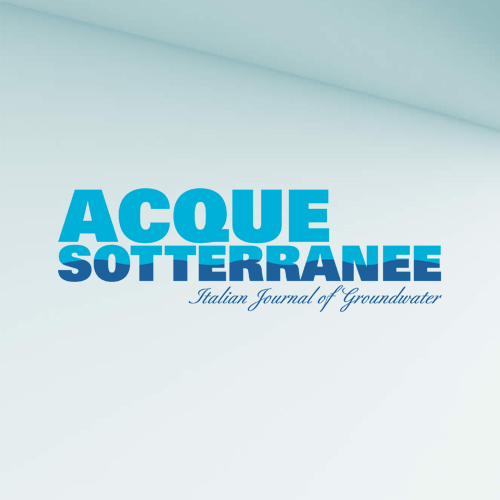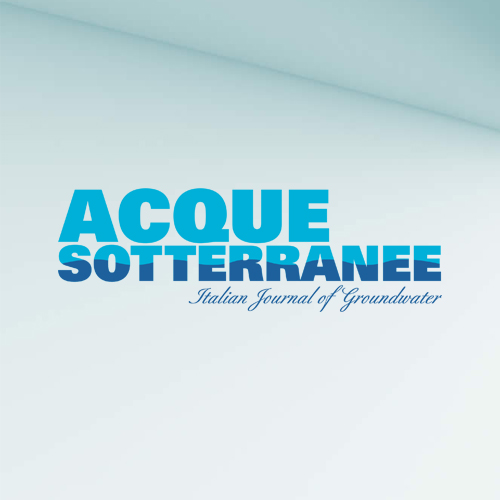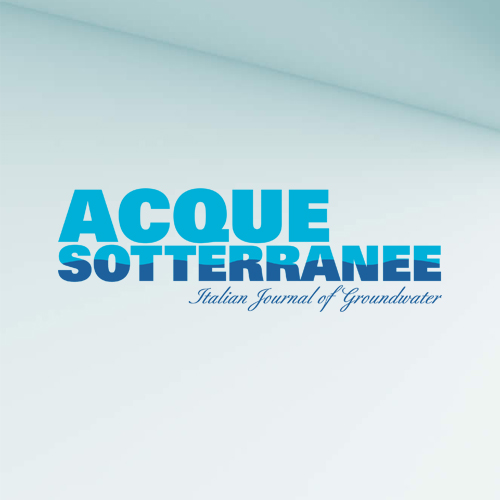Spatio-temporal variability of groundwater hydrochemical features in different hydrogeological settings in Piedmont and Campania regions (Italy), a comparative study
Accepted: 19 March 2024
SUPPLEMENTARY MATERIALS: 106
All claims expressed in this article are solely those of the authors and do not necessarily represent those of their affiliated organizations, or those of the publisher, the editors and the reviewers. Any product that may be evaluated in this article or claim that may be made by its manufacturer is not guaranteed or endorsed by the publisher.
Authors
The spatio-temporal evolution of groundwater chemistry has seen an increase in interest over the last decade at a global level. Identifying and discerning the sources of the natural and anthropogenic compounds and the actual hydrochemical processes, as well as their evolution, is essential to support a sustainable planning for managing and protecting groundwater resources at the present time and in the future. The main objective of this study is the comparison of two study areas in Italy (Piedmont and Campania Regions), different in their geographical and geological contexts and climate conditions, to highlight the similarities and differences in the hydrogeochemical behavior in space and time. Three main ions were considered (NO3 –, SO4 2–, Na+) and analyzed to identify the sources and hydrochemical processes responsible for their spatial distribution in the 2015-2020 period and evaluate the existence and the potential causes of trends in their concentration for the 2000-2020 period. Results highlight specific factors and processes distinguishing the spatial distribution and temporal variability of ion concentrations in Piedmont and Campania study areas. These processes are mainly related to the geological and geographical features of the study areas. In both areas, a significant influence of anthropogenic pressures emerges for both spatial and temporal evolutions, with remarkably increasing trends in NO3 – concentrations. In conclusion, some factors and processes emerge as site-specific, mainly related to the geological aspects and natural hydrochemical processes, whereas others are in common (i.e., anthropogenic impacts); thus, reinforcing the advantage of making comparative studies.
How to Cite

This work is licensed under a Creative Commons Attribution-NonCommercial 4.0 International License.
PAGEPress has chosen to apply the Creative Commons Attribution NonCommercial 4.0 International License (CC BY-NC 4.0) to all manuscripts to be published.
Similar Articles
- Tomasz Olichwer , Robert Tarka, Sebastian Buczy?ski, Impact of North Atlantic Oscillation on water resources in South Western Poland , Acque Sotterranee - Italian Journal of Groundwater: Vol. 10 No. 4 (2021)
- Dalanda Ltifi, Abdelkader Mhamdi, Lahmadi Moumni, Hydrochemical and geoelectrical investigation to determine the origin and spatial distribution of the salinization of the unconfined Plio-Quaternary aquifer of Tabeditt, Southern Tunisia , Acque Sotterranee - Italian Journal of Groundwater: Vol. 13 No. 1 (2024)
- Alessio Fileccia, Water well drilling: tips and key points to consider in water well design , Acque Sotterranee - Italian Journal of Groundwater: Vol. 12 No. 1 (2023)
- Stefano Menichetti, Alberto Doni, Organohalogen diffuse contamination in Firenze and Prato groundwater bodies. investigative monitoring and definition of background values , Acque Sotterranee - Italian Journal of Groundwater: Vol. 6 No. 1 (2017)
- Rudy Rossetto, Giovanna De Filippis, Iacopo Borsi, Laura Foglia, Massimiliano Cannata, Rotman Criollo, Enric Vásquez-Suñé, Spatial analysis and simulation tools for groundwater management: the FREEWAT platform , Acque Sotterranee - Italian Journal of Groundwater: Vol. 6 No. 3 (2017)
- Marco Pola, Ivica Pavičić, Vedran Rubinić, Ivan Kosović, Lidija Galović, Staša Borović, Lara Wacha, Kosta Urumović, First results of multidisciplinary investigations for the hydrogeological conceptual modelling of loess deposits in eastern Croatia , Acque Sotterranee - Italian Journal of Groundwater: Vol. 9 No. 1 (2020)
- Riccardo Nicolini, Lucio Di Matteo, Sandro Galdenzi, Fabio Baldoni, Francesco Frondini, Daniela Valigi, Study of dilution processes of sulfidic aquifer hosted by the Fiume-Vento karstic complex, Frasassi (Central Italy) , Acque Sotterranee - Italian Journal of Groundwater: Vol. 11 No. 3 (2022)
- Daniele Farina, Paolo Cavitolo, Climate and land use changes as origin of the Water Cycle variations and sediment transport in Pesaro Urbino Province, Central and Eastern Italy , Acque Sotterranee - Italian Journal of Groundwater: Vol. 5 No. 3 (2016)
- Francesco La Vigna, Groundwater and civil protection, what the Italian for "hydrogeological risk" should mean , Acque Sotterranee - Italian Journal of Groundwater: Vol. 5 No. 4 (2016)
- Alessandro Casasso, Bruno Piga, Rajandrea Sethi, Joerg Prestor, Simona Pestotnik, Magdalena Bottig, Gregor Goetzl, Pietro Zambelli, Valentina D'Alonzo, Roberto Vaccaro, Pietro Capodaglio, Marcela Olmedo, Alessandro Baietto, Charles Maragna, Fabian Böttcher, Kai Zoesseder, The GRETA project: the contribution of near-surface geothermal energy for the energetic self-sufficiency of Alpine regions , Acque Sotterranee - Italian Journal of Groundwater: Vol. 6 No. 1 (2017)
<< < 13 14 15 16 17 18 19 20 21 22 > >>
You may also start an advanced similarity search for this article.


 https://doi.org/10.7343/as-2024-748
https://doi.org/10.7343/as-2024-748










